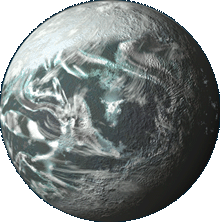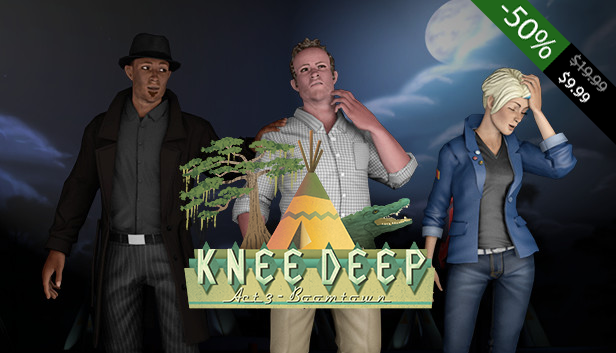 Centauri, a planet found in the Alpha Centauri System, is the chilly (-120°F, -84°C) homeworld of the Centauran species. Its temperature and anaerobic atmosphere make it uninhabitable to water-based life forms. The surface of Centauri is covered in city-sculptures such as the capital Shalyaris, which houses the international spaceport and the main office of the CRI. Foreigners are officially welcomed, but the complete lack of privacy afforded them tends to discourage emigration and tourism.
Centauri, a planet found in the Alpha Centauri System, is the chilly (-120°F, -84°C) homeworld of the Centauran species. Its temperature and anaerobic atmosphere make it uninhabitable to water-based life forms. The surface of Centauri is covered in city-sculptures such as the capital Shalyaris, which houses the international spaceport and the main office of the CRI. Foreigners are officially welcomed, but the complete lack of privacy afforded them tends to discourage emigration and tourism.
Overview
Climate
The atmosphere consists of primarily carbon dioxide and nitrogen, with ammonia and trace gases. Although Centauri lacks the temperature-moderating influence of oceans, sunlight falling on the planet is typically insufficient to drive major weather systems. Thin ammonia clouds can precipitate a light dusting of snow, while carbon dioxide frost may sublime in low-lying areas. Small pools of liquid ammonia with dissolved minerals can also form where temperatures are high.
Ecology
Centauri has three largely separate types of ecology: natural, agricultural, and urban. Wholly natural environments are found only in the several hundred nature reserves in carefully-chosen locations around the planet. Most are surrounding mountains and sites that might otherwise be more difficult to develop. These nature reserves are filled with a profusion of colorful vegetation and small wildlife and contained by a light mesh fences of sufficient height to retain flying creatures. Agriculture is not as important to the photosynthetic Centaurans as it might be to other species, but it does have vital roles to play. Centauran mineral supplements, nitrogen gas, decorative objects, and certain types of nanotube stock are examples of products more efficiently grown than manufactured. Along with agriculture, urban environments account for most life on Centauri. City parks and decorative gardens in the eaves of dwellings are home to a few hardy and low-maintenance or beautiful and well-loved species. The most numerous species of large animal life, by far, is the Centaurans themselves, whose population is in the hundreds of billions.
Geography
Millennia of construction and re-construction have left the surface of the Centauri smoother than one might expect for a planet with such weak forces of erosion. Landforms consist of mainly low hills and shallow basins, though a few mountain ranges do exist. Outside of small wildlife refuges, the planetary crust has been thoroughly reshaped by habitation and industry. Available mineral resources, with the exceptions of iron, nickel, and heavy metals, have been evenly redistributed into architecture and living things.
Civil engineering
Excepting large wildlife refuges and urban parks, the surface of Centauri is fully developed. The outer few hundred feet of the crust might be described as a foam, so thickly is it laced with residences, industries (including agriculture), and observatories. The lines and arcs of mass-transit systems and shipping lanes streak the surface in an orderly fashion. Vertically, population is concentrated at the city-sculptures of the surface; horizontally, the population density is nearly the same in all locations. What little geothermal and tectonic activity existed has been brought entirely under Centauran control by massive artificial constructs underground. Melted craters left by the Nall bombardment of 2550 have been built over, but not yet entirely eliminated.
Centauran Physical Data
- Height: 6 feet (1.83m) from bell tip to tentacle tip
- Weight: 300 pounds (136kg)
- Circulation pressure: 512/16 mmHg
- Circulation rate: 5 cycles per minute
- Respiration rate: 2 cycles per minute
- Bell Temperature: can vary with environment, -120F (-84.4C)
- Lifespan: 400 Terran years
- Native Language: Telepathy, Tataskra (written language)
- Homeworld: Centauri
A peaceful but strong-willed race, the denizens of Centauri are known for their remarkable scientists, physicists and mathematicians. Centaurans can participate in spoken communication, which is more comfortable for many species than telepathy, using special electronic vocalizers. These convert manipulations of brainwaves into speech sounds and vice versa.
Centaurans loathe violence and will, as a general rule, pursue diplomatic resolutions to any severe conflict. They are dedicated to the pursuit of science and exploration for peaceful ends, and find science for profit repugnant. Their long term and society-oriented solutions to problems, which may involve death and heavy responsibility, can appear to be coldly logical. But the use of telepathic consensus and their lack of facial expressions do not at all mean that decisions are made without the sharing of emotion. The motivations may simply be difficult for individualists to understand, and the expressions difficult for non-empaths to perceive clearly.
Centaurans hold their species in regard above others, respecting the most those civilizations that feel no need to use their power and knowledge in flashy or violent displays.
Society
Their society is perhaps best summed up by ‘collectivism.’ Desiring privacy for its own sake and secrecy for personal reasons are regarded as pathological in Centaurans; the existence of these feelings in other races is a sometimes troubling, but well-recognized oddity. Some information is kept from the other races to prevent danger to themselves and others, but greater and freer communication is generally regarded as the means to a safe environment. Positive socialization and being able to sense organic minds are not only desirable for Centaurans, but essential for mental health.
The open exchange of words and feelings among Centaurans allows them to find and treat a wide variety of behavioral and sociological problems (many of which would be regarded as personality traits by other races). To allow for innovation, some harmless eccentricities are allowed, guided by the stabilizing influence of neighbors and colleagues. Simple punishment is regarded as pointless; friendly persuasion, medical treatment, and re-education are used instead, and since antisocial problems are caught early by the telepathic communities, the individual’s potential usefulness is largely preserved. If an individual does not respond to treatment, then it is useless to society. It is killed, and its body consumed and spun into new constructions. Aliens are sometimes seen as not worth the trouble of curing and can have odd notions like not wanting their violent tendencies repaired. Any visiting alien that poses violent danger is executed without question or trial.
Population control is vital to the Centaurans, given their distaste for colonization. Whenever an important leader dies the Cycling occurs. The Cycling is roughly mass, coordinated suicide. Many Centaurans apply to participate in the Cycling, but few are chosen. To be chosen is considered a great honor, among the noblest possible conclusions of a Centauran’s life. Participants in the cycling line up in concentric circles around the remains of their leader. They then fall to the ground, one after the other, shattering into pieces which are gathered up for important construction projects.
Biology
Centaurans might appear at first to be simple bubbles of glass with arms, but their transparency reveals a complex structure. Much of them is contained within a rounded shell composed of layer upon layer of violet-tinted glass. Many of the organs are arranged around the inside of the shell, the being’s bulk being in a trunk that hangs in the middle and divides into eight tentacles.
As asexual creatures, they give birth once every six years, from 27 years of age to about 250. A unique sort of connection exists between parent and child, but a harmonious relationship with neighbors is essential to growth and education.
The digestive system, which has a single opening, is stained blue by the colonies of algae that sustain their host with nutrition derived from nitrogen and light. Not much is needed, but proper lighting cannot be done without for more than a couple days. Every few weeks, in order to weave constructs, regenerate broken tentacles, and nourish unborn young, Centaurans must consume matter through an orifice in the base of the bell. Hydrofluoric acid digestive fluid helps them to dissolve the crystalline organisms of their homeworld, but would turn the organics of most other species’ food into steaming hot carbon. Most kinds of soil are nutritious, but even glass, inorganic ceramics and composites, and glass-shelled organisms can suffice, if they contain no high levels of toxic metals.
A ring of forty-eight iridescent pink eyespots (or fifty, in some familial lines) surrounds the base of the bell, providing an enormous and continuous field of vision. Turning around to look in a certain direction is pointless for a being that is nearly radially symmetric. In addition to physical sight, Centaurans have a powerful intuitive sense for visualizing spatial relationships and motion.
Centaurans possess no blood as such, with various substances carried in molecular tubules. This accounts for their ability to withstand temperatures far from optimal. When injured, however, liquid may seep from their tissue.
The ring-shaped lung near the top of the trunk is also the location of their somewhat limited hearing ability. Respiration involves only nitrogen, with an optimal temperature of -120 degrees Fahrenheit. (This is below the temperatures at which dry ice evaporates and liquified ammonia gas boils.)
Their chief method of locomotion is a smooth glide several feet in the air, accomplished by psionically pressing against the ground (or pulling on a large stationary mass overhead). On average, Centaurans can rise about seven yards above a horizontal surface; with effort, they may be able to attain much greater altitudes.
Naming Conventions
Centauran names are a compilation of the first two letters of their most direct line of ancestry, usually four or five generations. So, the offspring of Altiarxi (who is descended from Yrtaltal, who is descended from Xyltyr, who is descended from Ortlanxi) might be known as Yrxyoral.

